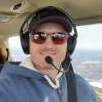Leaning and power settings
-
Members Online
- TCC
- Bolter
- Jake@BevanAviation
- kortopates
- pirate
- larryb
- Guilly
- Ragsf15e
- Schllc
- jetdriven
- mooney_flyer
- Mobius708
- Easy E
- DCarlton
- kaba
- McMooney
- DXB
- christaylor302
- Joe Linnebur
- Deb
- Marauder
- 59Moonster
- Mac80
- AndreiC
- redbaron1982
- philiplane
- Flyler
- bigmo
- LANCECASPER
- PeterRus
- eman1200
- DEGWS
- RangerM20
- Rick Junkin
- Utah20Gflyer


Recommended Posts
Join the conversation
You can post now and register later. If you have an account, sign in now to post with your account.